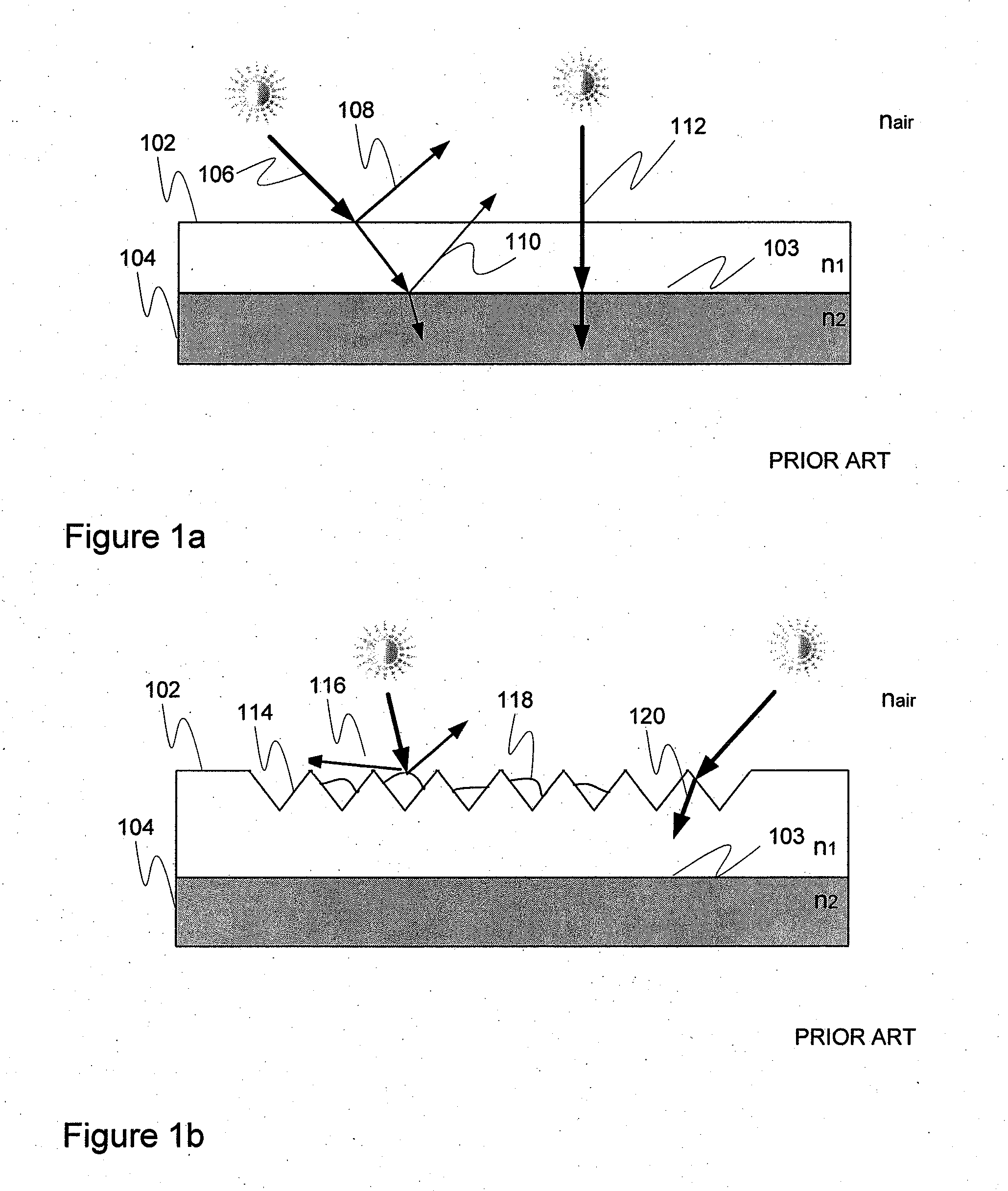Laminate structure with embedded cavities and related method of manufacture
a technology of laminate structures and cavities, applied in the field of optical fibers, can solve problems such as limiting the scope of claimed subject matter
- Summary
- Abstract
- Description
- Claims
- Application Information
AI Technical Summary
Benefits of technology
Problems solved by technology
Method used
Image
Examples
embodiment 302
[0080]FIG. 3 discloses another embodiment 302 with two carrier elements 304, 306. In this embodiment, the bottom element 306 contains a surface relief pattern 308 with protrusion 308a and intermediate recess 308b forms, or “profiles”, on top of which a flat top element 304 has been laminated. Again, the established cavities may contain air and / or some other material(s).
embodiment 402
[0081]FIG. 4 discloses an embodiment 402 in which a plurality of different embedded surface relief forms is configured to form a number of embedded surface relief patterns relative to elements 404, 406 laminated together. Triangular 408, trapezoidal 410 and slanted (rectangle or square) 412 forms are shown in the figure. For example, the forms and related patterns may have been configured for outcoupling and / or other type of light redirecting as visualized in the figure by the arrows. Forms of different shape and / or material may be configured so as to provide a common, collective optical function, or they may be utilized for different purposes. A certain embedded surface relief form may have multiple uses depending on e.g. the incident angle and / or face of light. For example, in the figure the leftmost triangle form or cavity has both outcoupling and light trapping functionalities, which has been visualized by the two rays. The established cavities may contain air and / or some other ...
PUM
| Property | Measurement | Unit |
|---|---|---|
| size | aaaaa | aaaaa |
| transmittance | aaaaa | aaaaa |
| height/depth | aaaaa | aaaaa |
Abstract
Description
Claims
Application Information
 Login to View More
Login to View More - R&D
- Intellectual Property
- Life Sciences
- Materials
- Tech Scout
- Unparalleled Data Quality
- Higher Quality Content
- 60% Fewer Hallucinations
Browse by: Latest US Patents, China's latest patents, Technical Efficacy Thesaurus, Application Domain, Technology Topic, Popular Technical Reports.
© 2025 PatSnap. All rights reserved.Legal|Privacy policy|Modern Slavery Act Transparency Statement|Sitemap|About US| Contact US: help@patsnap.com



